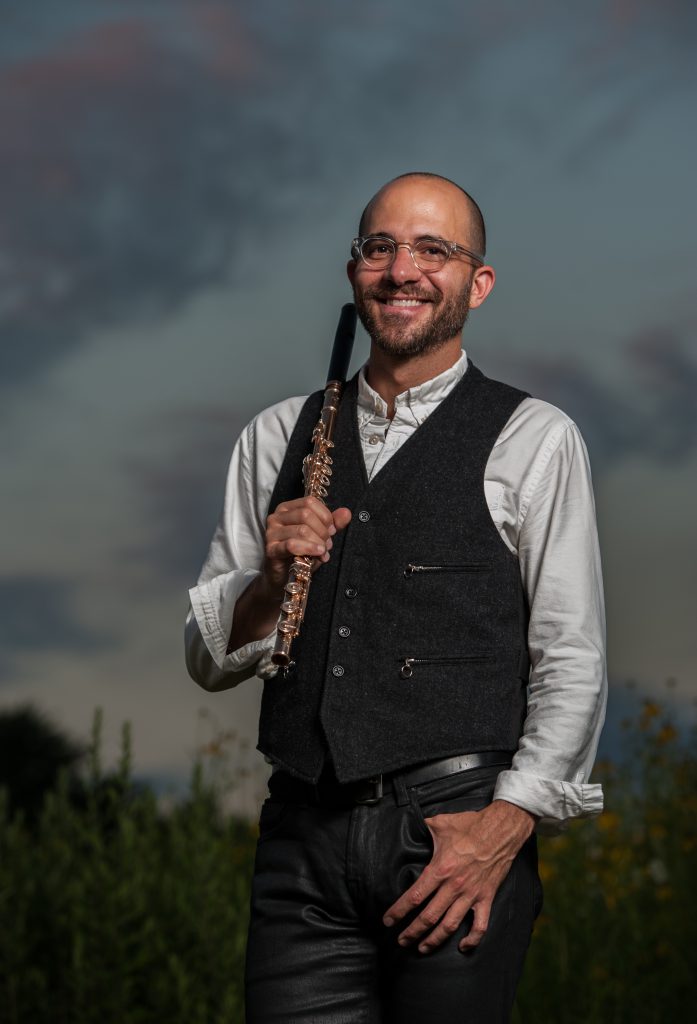Musicians from Marlboro unearth choice rarities

Flutist Joshua Smith performed in the Musicians from Marlboro concert Wednesday night.
What lurks in the unexplored corners of the chamber music repertory for flute and strings? The Marlboro Music Festival is the sort of place where musicians have the time to get to the bottom of such matters.
The first of this year’s Musicians from Marlboro concerts brought the results to Washington. With the Freer Gallery of Art closed for renovation, the Smithsonian Associates co-hosted this concert at the National Museum of Natural History on Wednesday night.
The most exotic work excavated on this program was Max Reger’s Serenade in G Major, for the unusual combination of flute, violin, and viola. Joshua Smith, principal flutist of the Cleveland Orchestra, tamed the many challenges of the flute part. Reger’s writing is cheerful but daunting, tonal in harmonic style, with a few reflective moments in the opening movement sandwiched between madcap escapades. Violinist Francisco Fullana wove in his part’s clever countermelodies and assisted with the accompanying figures of violist Maiya Papach, but the starring role falls to the flutist.
In the second movement, marked Larghetto, Reger makes a typical shift toward overly complex counterpoint, all rigorously constructed and fascinating but without enough memorable melody to balance out the intricacies. The concluding Presto could have been a notch or two faster perhaps, but the effect was delightful and the flute playing effortless, especially as Smith soared into the upper range. Reger’s Serenade is a strange piece of music but well worth hearing.
Almost as rare was Joseph Haydn’s Flute Trio in D Major, Hob. XV:16, one of three pieces for the unusual combination of flute, cello, and piano that the composer produced for the London market. Here the flute and cello are both overshadowed by the piano, played with refinement by Cynthia Raim, who won the Clara Haskil Competition in 1979. She has the delicacy of touch of a number of pianists who have won that competition, although especially in the outer movements she overpowered her flutist at times. Smith was ideal once again, always producing a slender, pretty tone perfectly on pitch.
The slow movement was the highlight, set in the parallel minor, a gorgeous dance-like tune, played with elegant simplicity. The musicians took the repeat of the first section, with Raim adding graceful embellishments. The performers gave the abrupt sudden modulation just the right wry humor, repeating the same effect later in the coda. The third movement was a light and graceful romp, even at a breathless tempo.
Pieces for other combinations were just as pleasing, beginning with Schubert’s rarely heard String Trio in B-Flat Major. Although the 19-year-old composer completed only the first movement, he already showed a solid mastery of how to write for strings. This Allegro movement is a sunny piece, heard in am atractive, balanced performance by Fullana, Papach, and cellist Deborah Pae. Fullana coaxed a bloom of sound from the sweet opening melody, and the rest of the piece fell fluently into place.
The longest work, Schumann’s Piano Quartet in E-Flat Major, filled the entire second half. The keyboard dominates the piece, and Raim led the work convincingly, taking the reins at the start of the opening movement’s fast section after a slow introduction that felt suspended in space. The four players gave the Scherzo a Mendelssohnian lightness, with every note beautifully arrayed.
The only disappointment was the slow movement. The tempo marking is indeed Andante, which might justify the somewhat rushed pacing of this performance, but in full it reads Andante cantabile, which equally justifies some more time to sing. At the faster tempo the musicians missed much of the poignant delicacy and romantic depth, replacing it instead with a sense of agitation and angst. Hints of what might have been came when the viola and finally the cello took turns with the main theme. The finale, by contrast, had just the right play of energy, and was played adroitly from beginning to end.
The remaining Musicians from Marlboro concerts will take place at the Library of Congress, 8 p.m. January 25 and March 22. www.asia.si.edu/events/performances.asp.


